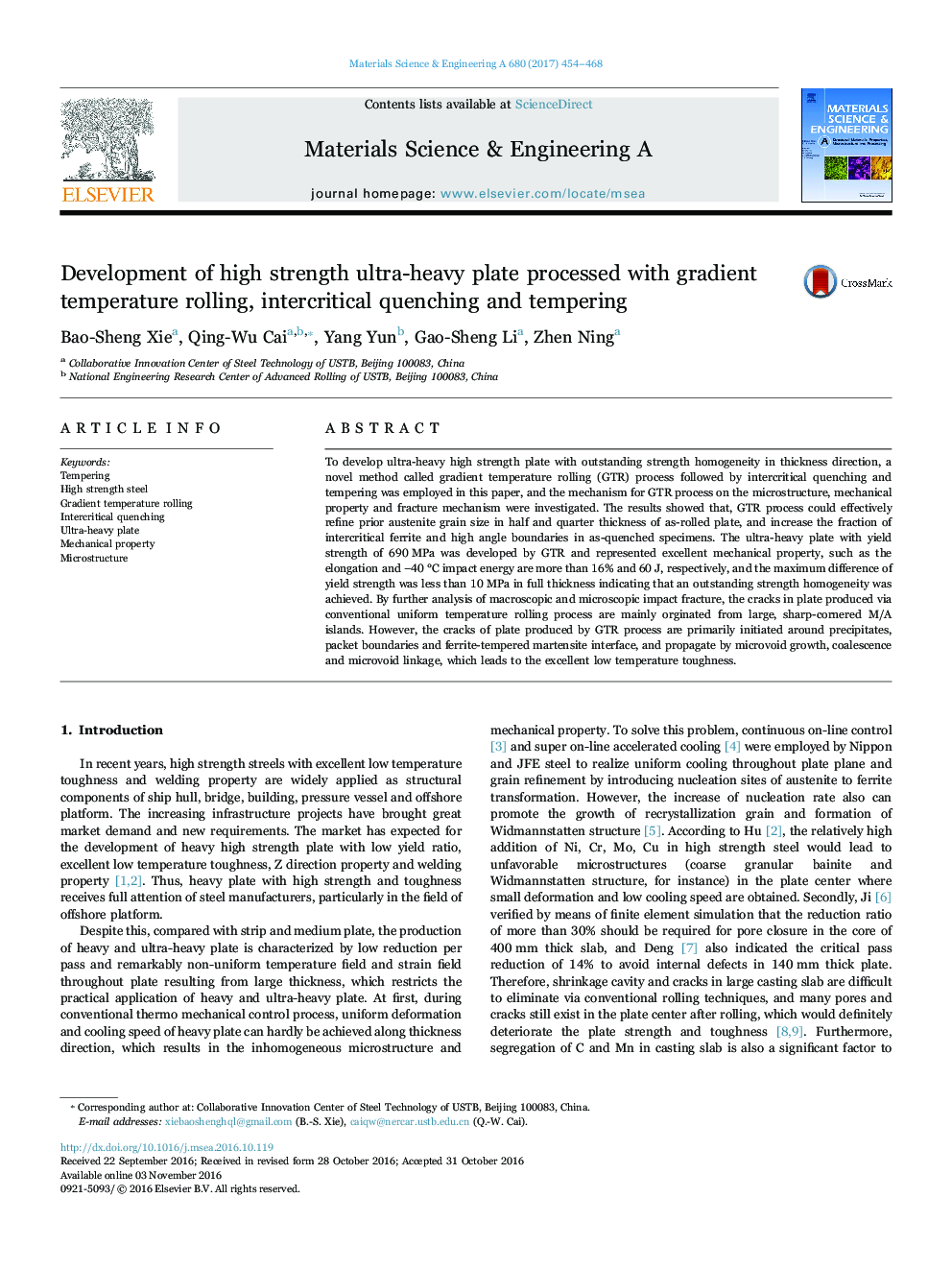| Article ID | Journal | Published Year | Pages | File Type |
|---|---|---|---|---|
| 5456788 | Materials Science and Engineering: A | 2017 | 15 Pages |
To develop ultra-heavy high strength plate with outstanding strength homogeneity in thickness direction, a novel method called gradient temperature rolling (GTR) process followed by intercritical quenching and tempering was employed in this paper, and the mechanism for GTR process on the microstructure, mechanical property and fracture mechanism were investigated. The results showed that, GTR process could effectively refine prior austenite grain size in half and quarter thickness of as-rolled plate, and increase the fraction of intercritical ferrite and high angle boundaries in as-quenched specimens. The ultra-heavy plate with yield strength of 690 MPa was developed by GTR and represented excellent mechanical property, such as the elongation and â40 °C impact energy are more than 16% and 60 J, respectively, and the maximum difference of yield strength was less than 10 MPa in full thickness indicating that an outstanding strength homogeneity was achieved. By further analysis of macroscopic and microscopic impact fracture, the cracks in plate produced via conventional uniform temperature rolling process are mainly orginated from large, sharp-cornered M/A islands. However, the cracks of plate produced by GTR process are primarily initiated around precipitates, packet boundaries and ferrite-tempered martensite interface, and propagate by microvoid growth, coalescence and microvoid linkage, which leads to the excellent low temperature toughness.
